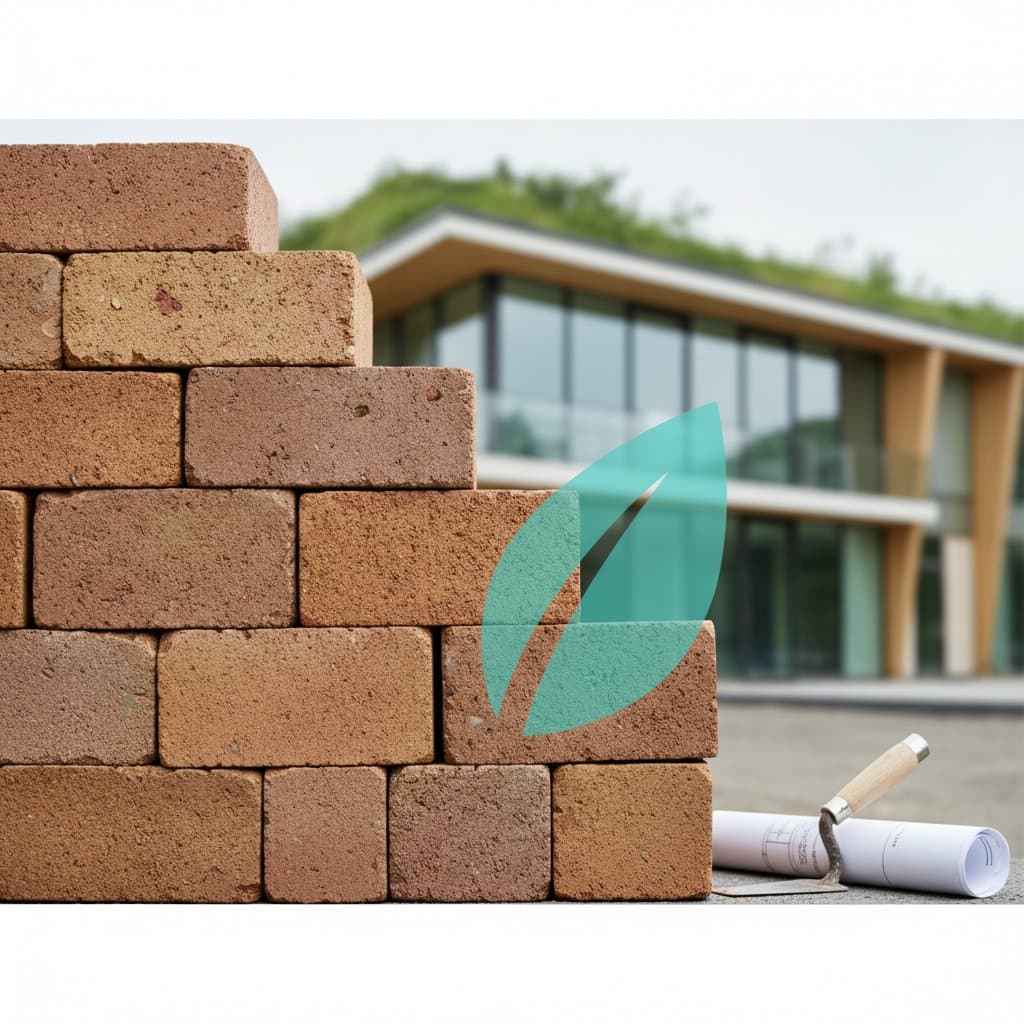Zero-Cement Bricks: Revolutionizing Sustainable Masonry
Zero-cement bricks serve as masonry units produced without Portland cement. These bricks employ binders like fly ash, slag, or aluminosilicate materials that harden through reactions with alkaline activators. Referred to as geopolymer bricks, they mimic the appearance and functionality of standard bricks while offering a substantially reduced environmental impact.
Builders and property owners increasingly recognize these bricks as viable options for constructing walls, facades, and paved surfaces. They provide reliable strength, enduring performance, and ecological advantages independent of the high-energy demands of cement manufacturing.
Material Costs
The cost of zero-cement bricks typically spans from 1 to 2.5 dollars per unit, influenced by factors such as dimensions, surface treatments, and raw material origins. When installed, expenses range from 8 to 14 dollars per square foot, encompassing mortar, labor, and site preparation.
Elevated prices occur with intricate designs, custom pigmentation, or scarce regional availability. Economies arise from utilizing nearby industrial waste, like fly ash from local power facilities, or opting for larger formats that minimize labor requirements.
Although initial investments may exceed those of conventional materials, the reduced need for upkeep and extended durability often yield lower long-term expenses.
Key Specifications to Verify
Prior to purchase, evaluate these essential attributes:
- Compressive strength: Minimum of 5,000 psi for load-bearing applications; select variants exceeding 8,000 psi for demanding structures.
- Water absorption: Less than 10 percent to suit exterior exposures.
- Freeze-thaw resistance: Certified for the specific regional climate when intended for outdoor settings.
- Dimensional accuracy: Variations not exceeding 1/16 inch to facilitate precise joint alignment.
- Fire resistance: Compliant with noncombustible classifications under ASTM guidelines or equivalents.
- Density and mass: Typically 120 to 140 pounds per cubic foot across standard sizes.
Request laboratory test reports and certifications from accredited facilities. Uniform product labeling further guarantees quality consistency.
Installation Guidelines
The installation sequence remains uniform for walls, pathways, or similar features:
- Design the layout and establish chalk lines for alignment.
- Dig the foundation to the specified depth for support and bedding courses.
- Firmly pack the base in layers of 2 inches until achieving maximum compaction.
- Level the bedding material to a uniform 1-inch depth, using coarse sand or stone dust.
- Position the bricks starting from a straight reference point, ensuring consistent joint spacing.
- Secure boundaries with restraints for pavements or anchors for vertical elements.
- Joint the gaps using polymeric sand for flexible applications or mortar for rigid bonds.
- Vibrate and sweep the finished area, then permit complete curing prior to applying loads or sealants.
For brick modifications, operate a wet masonry saw equipped with dust suppression, and equip yourself with protective eyewear, hand coverings, and respiratory gear.
DIY Installation Versus Professional Services
Individuals with fundamental tools and dedication can manage modest projects like garden borders or short walkways. A basic trail may require a single weekend, utilizing a vibrating compactor, spirit level, and cutting tool.
Conditions suitable for DIY efforts:
- Projects covering fewer than 200 square feet.
- Level terrain featuring adequate runoff.
- Linear configurations or gentle arcs.
Scenarios requiring expert involvement:
- Installations bearing vehicular traffic.
- Locations with unstable ground or significant inclines.
- Constructions involving retention, steps, or water management alterations.
- Situations mandating code-compliant engineering reviews.
Experienced contractors excel in site preparation, soil stabilization, and intricate patterning. Their expertise justifies the additional expenditure by promoting superior longevity.
Considerations for Regional Climates
These bricks adapt well to diverse settings, yet tailored adjustments enhance performance.
- In cooler regions: Select units validated for cyclic freezing and thawing; incorporate air-entraining agents in the mix as advised.
- In arid or warm locales: Shield bricks from direct sun and maintain moisture during the setting phase to avert fissures.
- Near shorelines: The minimal calcium composition resists saline corrosion, though meticulous joint protection proves crucial.
- In precipitation-heavy areas: Implement sloped drainage and coarse aggregate bases to prevent waterlogging.
- In gusty zones: Fasten facade layers robustly and adhere to prescribed anchoring intervals per building regulations.
Such adaptations extend the service life of installations, minimizing interventions over time.
Expert Recommendations for Optimal Results
- Procure 5 to 10 percent additional units to accommodate trimming and mishaps.
- Stack bricks on pallets in sheltered areas to preserve cleanliness and dryness.
- Integrate pieces from multiple pallets to distribute natural shade differences evenly.
- Employ pH-neutral cleaning agents after placement.
- Confirm compatibility between joint fillers and brick composition; certain geopolymers interact adversely with Portland cement mixes.
- Permit thorough drying of the assembly before introducing protective coatings.
Adhering to these practices yields uniform aesthetics and dependable functionality.
Implementing Sustainable Choices
Zero-cement bricks translate environmental goals into tangible construction practices. They diminish carbon outputs, repurpose industrial residues, and match or surpass the robustness of legacy options. For those prioritizing enduring, care-free builds, these materials enable ethical development without compromising form or resilience.
Initiate with a pilot endeavor to master material behavior and curing protocols. Consult regional providers for performance documentation and guidance. As adoption grows among contractors, enhanced accessibility and affordability will broaden opportunities for eco-conscious masonry applications.
